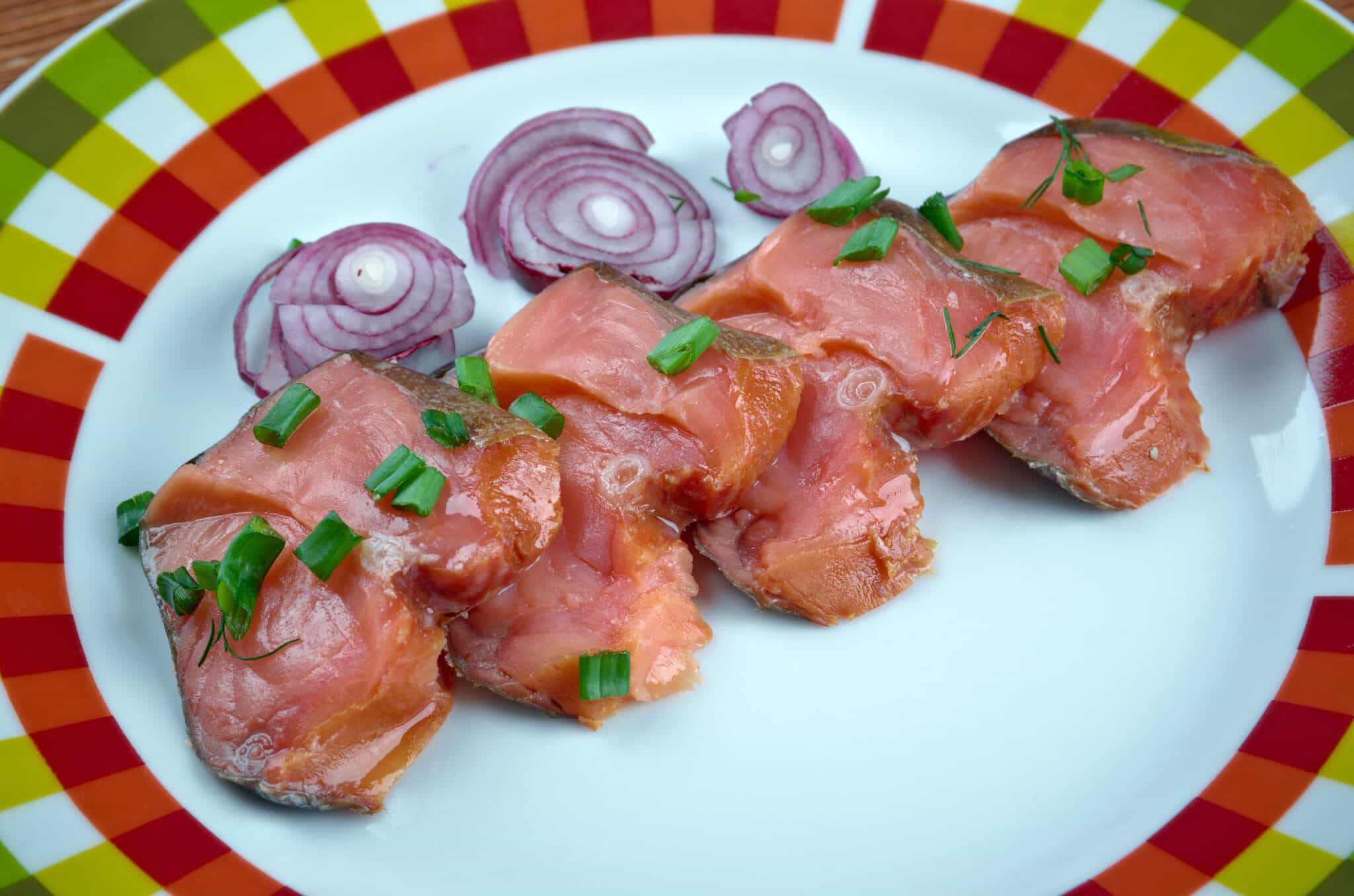
Rakfisk, a Norwegian national dish, is a culinary delight that has been relished for centuries. This traditional Norwegian delicacy is crafted from fermented fish, usually trout, and occupies a cherished spot in the hearts of Norwegians. So much so that every year, approximately 500 tons of this dish are consumed across the country.
This simple dish has a fascinating history, as it has been savored in the Scandinavian region for centuries. Its preparation process can take from months to years.
If you´re passionate about food, check out this guide created by our Remitly team as part of our series celebrating the traditions of our global customers. Enjoy!
The History of Rakfisk
The history of rakfisk dates back to the ancient times when preservation methods were limited. Fermentation was one such method used by our ancestors to keep food edible during long winters. It’s believed that rakfisk originated around 1300 AD, making it an integral part of Norwegian culture for over seven centuries.
This age-old tradition continues today, with families passing down their unique recipes from generation to generation. The process may have evolved over time, but the essence remains the same—preserving fish through fermentation.
Ingredients and Preparation of Rakfisk
The primary ingredient in rakfisk is trout, although other types of fish like char can also be used. Salt and sugar are essential for initiating the fermentation process, while water ensures that the fish remains moist throughout.
Some recipes might include additional ingredients like whey or beer to enhance flavor, but these are optional. Regardless of variations, what makes each batch special is not just what goes into it, but also how it’s prepared—the love and care put into every step truly make each serving of rakfisk unique.
The process of making rakfisk involves several meticulous steps and demands patience. First, freshly caught trout are meticulously gutted and cleaned. They are then layered in a wooden barrel or plastic container, along with salt and sugar. This combination kick-starts the fermentation process, which can span anywhere from two to three months and, in some cases, even up to a year.
Once fermented, the fish develops a strong aroma and flavor characteristic of rakfisk. It’s then ready to be enjoyed as is or used in various dishes. Despite its pungent smell, many find this delicacy irresistible due to its unique taste profile.
A Simple Rakfisk Recipe
Rakfisk is a dish that requires patience and precision. Here’s a basic recipe to help you get started on your rakfisk journey.
Ingredients:
- 2 kg fresh trout
- 100 g salt
- 50 g sugar
- Water, as needed
Instructions:
- Begin by cleaning the trout thoroughly. Remove the guts but leave the backbone intact.
- Mix the salt and sugar in a bowl.
- Layer the bottom of a wooden barrel or plastic container with some of this mixture.
- Place one layer of fish on top, followed by another layer of the salt-sugar mix.
- Repeat these layers until all fish are covered, ending with a layer of the mixture on top.
- Add enough water to cover the fish completely.
- Cover the container and store it in a cool place for two to three months to allow fermentation.
- After this period, your rakfisk is ready to be enjoyed.
Remember, making rakfisk is an art that takes time to perfect—don’t be disheartened if your first batch doesn’t turn out as expected.
Traditional Serving Methods for Rakfisk
Traditionally, rakfisk is served thinly sliced on flatbread or lefse—a type of Norwegian potato bread. It’s often accompanied by condiments like sour cream, red onion, mustard sauce, and sometimes even aquavit—a traditional Scandinavian spirit.
Rakfisk holds such cultural significance in Norway that there are events dedicated to celebrating this delicacy. The most notable among them is the annual Rakfisk Festival held in Fagernes. This event attracts thousands of visitors who come to enjoy music performances, cooking demonstrations, and of course—taste different varieties of rakfisk.
While rakfisk is deeply rooted in Norwegian culture, its influence has reached far beyond Norway’s borders. Today, you can find rakfisk being served in Scandinavian restaurants worldwide as chefs strive to introduce diners to this unique dish.
The Broader Cuisine of Norway
Norwegian cuisine boasts a plethora of delicacies, ranging from hearty stews and cured meats to delicate pastries and seafood dishes like rakfisk, all of which reflect the country’s fondness for simplicity and its deep connection to the natural landscape.
Traditional Norwegian Dishes
One popular dish is fårikål—a mutton stew, often regarded as Norway’s national dish. It’s simple yet flavorful, made with mutton, cabbage, peppercorns, and little else.
Klippfisk—dried and salted cod—is another well-known Norwegian delicacy often used in bacalao, a savory stew with tomatoes, onions, and peppers.
For those with a sweet tooth, krumkake—a thin waffle-like cookie rolled into a cone shape—and lefse—a soft flatbread typically spread with butter and sugar—are must-tries.
Norwegian Food Culture
Food in Norway is more than just sustenance—it’s a way of life. Norwegians take pride in their food traditions, many of which are tied to the country’s rich history and natural resources.
From foraging for berries in the summer to fishing in the fjords, these activities not only provide ingredients for meals but also opportunities for families to spend time together.
Whether it’s enjoying rakfisk during festive occasions or savoring a bowl of fårikål on a cold winter day, food plays an integral role in bringing Norwegians together.
Visit the homepage, download our app, or check out our Help Center to get started.